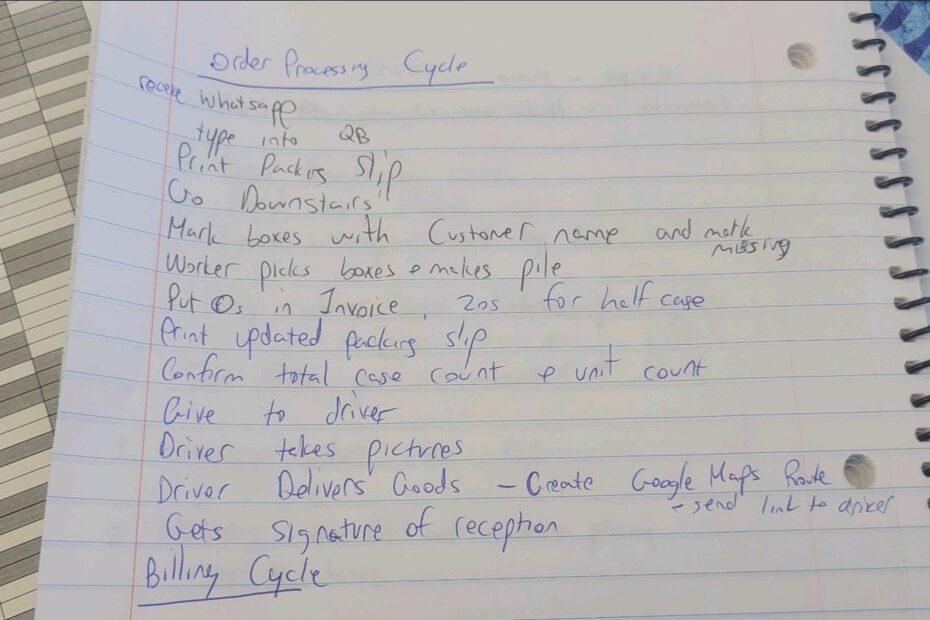Step 1 – Pen and Paper
This is an example of process capturing in action.
It’s dead simple, but requires effort and focus.
All were doing at this point is writing down the steps of the order fulfillment process.
No visuals yet. Just capturing.
The sloppier the handwriting the better.
Next Step of Process Modeling

Let’s take the handwritten notes and turn them into a flow diagram.
This allows us to view the whole thing in one shot, and get good clarity on where bottlenecks are happening.
We can also easily make changes to this diagram and see how it changes the flow.
So for now, the next thing I’m going to be working on is parsing the whatsapp messages that come in as an unstructured list of items and numbers.
We need it to go directly into quickbooks for now, or into a spreadsheet for picking. Either way, the data needs to be parsed and structured.
I already experimented with Chatgpt, and while not perfect, it may the perfect solution.
Will share findings and process next week.
Reimagine The Flow

Now comes the fun part.
We broke the order processing flow down in the previous post, and now we’re going to start streamlining and automating it.
The key to making changes that work is to leave the process mostly the same, but remove the bottlenecks or inefficiencies within it.
While discussing this process it became obvious that the biggest bottlenecks in this process were:
1. Manually entering text data into Quickbooks to create the Sales Order
2. Manually counting boxes after they were picked, and making sure that the count matched the final count on the sales order (after backorders were removed)
So the top priority is to remove the bottleneck of manually entering order data.
Now normally, we would set up some kind of digital based ordering portal for customers so that the info comes through seamlessly with no transformation needed.
However, in this case, the customers of this business only use whatsapp for everything and don’t want to place orders through a portal. So we’ll have to roll with that, while simultaneously building a user friendly portal that customers will love.
This comes with some challenges. The biggest one is that customers are sending in orders with no structure.
Luckily, we can use Chatgpt to transform the data into something that our system will understand.
In the next post, I will detail my process for making that happen.
Sign up below if you want to get an email when the next post is done.
